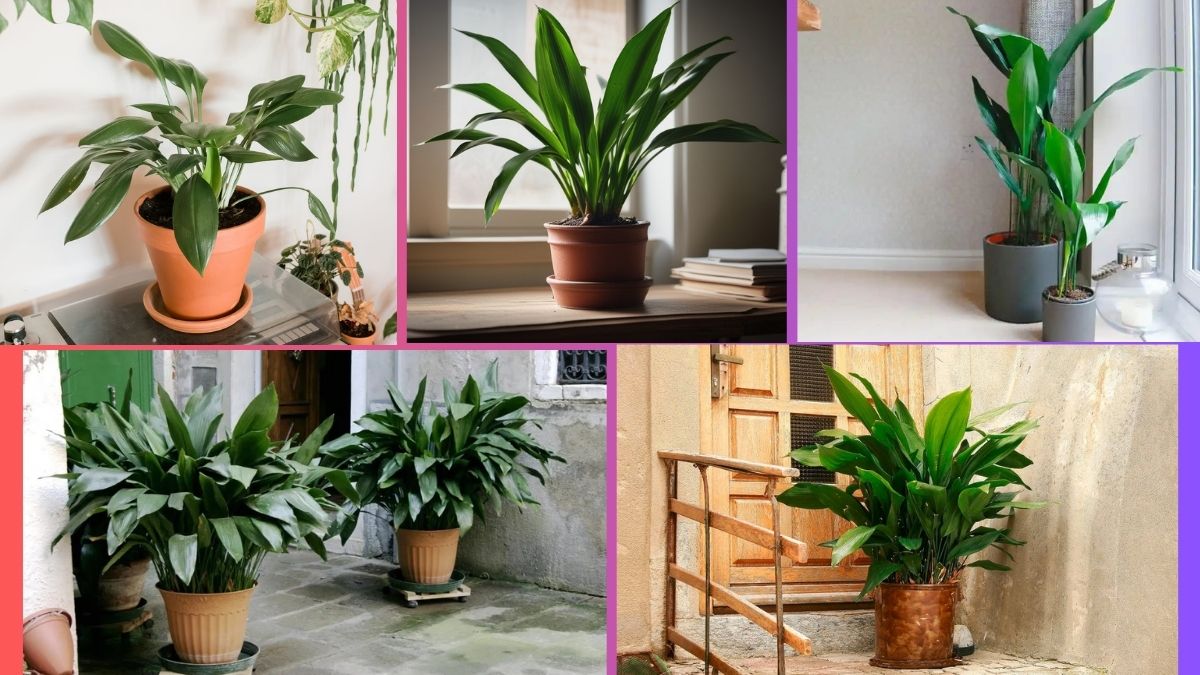The Cast Iron Plant (Aspidistra elatior) is one of the most resilient and forgiving houseplants you can grow. Renowned for its ability to tolerate neglect, low light, and inconsistent care, this sturdy evergreen plant is native to the forests of East Asia, particularly Japan and Taiwan. With its lush, dark green, lance-shaped leaves, the Cast Iron Plant adds a touch of elegance to homes, offices, and shaded gardens.
Despite its hardy nature, one essential aspect of Cast Iron Plant care is proper watering. While it can survive occasional neglect, both overwatering and underwatering can harm the plant over time. So, how often should you water a Cast Iron Plant? In this comprehensive guide, we’ll explore watering frequency, influencing factors, signs of watering issues, and best practices to help you keep your Cast Iron Plant healthy and thriving.
Understanding the Cast Iron Plant’s Natural Habitat
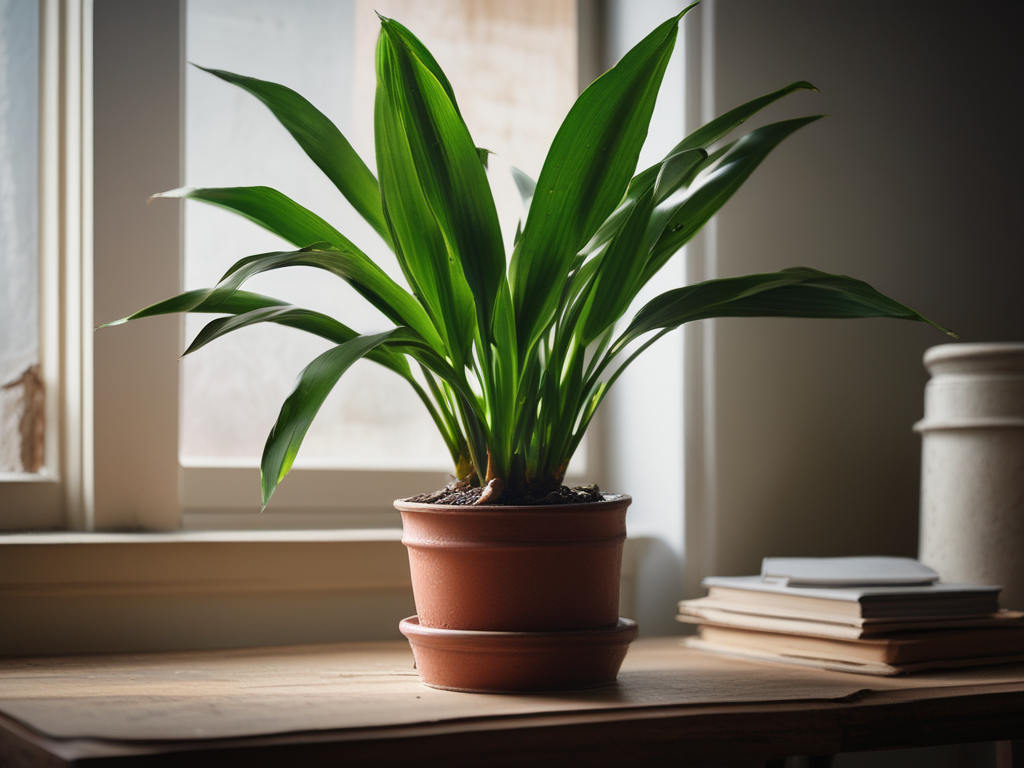
In its native environment, the Cast Iron Plant grows:
- Under dense forest canopies
- In shaded, humid conditions
- In well-draining, organic-rich soil
- Receiving moderate rainfall
These conditions mean that while the plant benefits from regular moisture, it never sits in soggy or waterlogged soil. Mimicking this balance indoors or in the garden is key to successful cultivation.
How Often Should You Water a Cast Iron Plant?
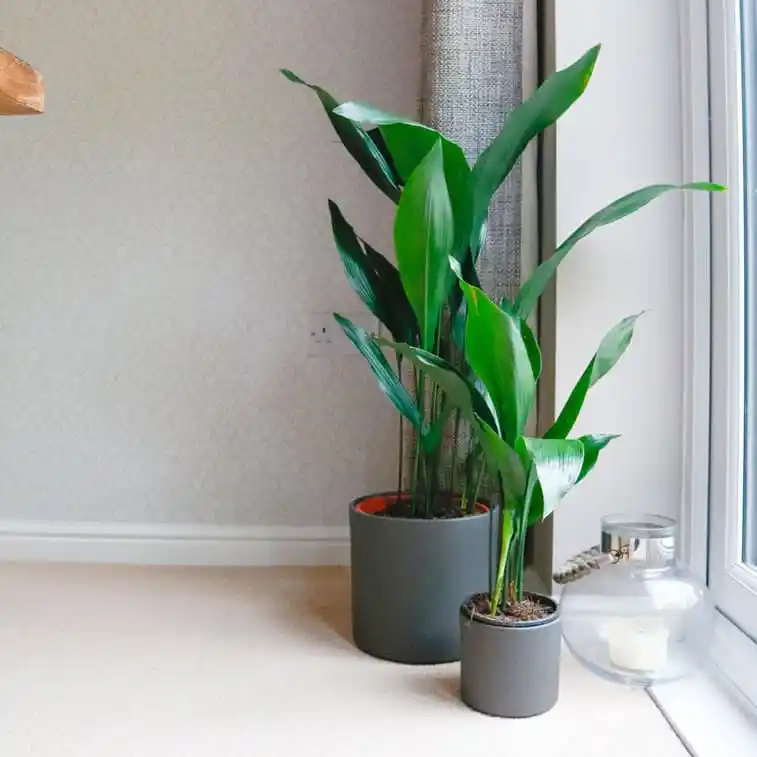
1. General Watering Schedule
A practical guideline for watering a Cast Iron Plant is:
- Water once every 7–14 days during the growing season (spring and summer).
- In fall and winter, reduce watering to once every 2–3 weeks.
However, the precise frequency depends on environmental conditions such as temperature, light, humidity, soil type, and pot size.
Key Rule:
Allow the top 1–2 inches of soil to dry out before watering again.
Unlike many tropical plants, the Cast Iron Plant prefers slightly drier conditions between waterings and is more tolerant of drought than excessive moisture.
Factors Influencing Cast Iron Plant Watering Needs

To determine how often your Cast Iron Plant needs watering, consider these critical factors:
1. Temperature and Season
- Warm temperatures (above 24°C/75°F) increase evaporation, requiring more frequent watering.
- Cooler temperatures (below 18°C/64°F) reduce water needs as the plant’s growth slows.
Tip: Water more often in summer and reduce during winter dormancy.
2. Humidity
While the Cast Iron Plant tolerates low humidity better than most houseplants, it thrives in moderate humidity (40–60%):
- In dry, air-conditioned or heated environments, soil dries out quickly.
- In humid areas, soil retains moisture longer.
Tip: Occasionally misting the leaves can benefit the plant in dry conditions, though it’s not strictly necessary.
3. Light Exposure
- Bright, indirect light promotes slightly faster growth and water use.
- Low light or shaded areas reduce evaporation and water requirements.
Tip: In shaded spots or dim corners, water less frequently to avoid soggy soil.
4. Soil Type and Drainage
A well-draining potting mix is essential. Ideal soil includes:
- Loamy soil combined with perlite or coarse sand
- Organic compost to retain some moisture
Tip: Avoid compacted, water-retentive soils that increase the risk of root rot.
5. Pot Size and Material
- Larger pots hold more water and dry out more slowly.
- Terracotta pots allow for faster evaporation than plastic or ceramic.
Tip: Ensure your pot has good drainage holes to prevent excess moisture buildup.
How to Check Soil Moisture Before Watering
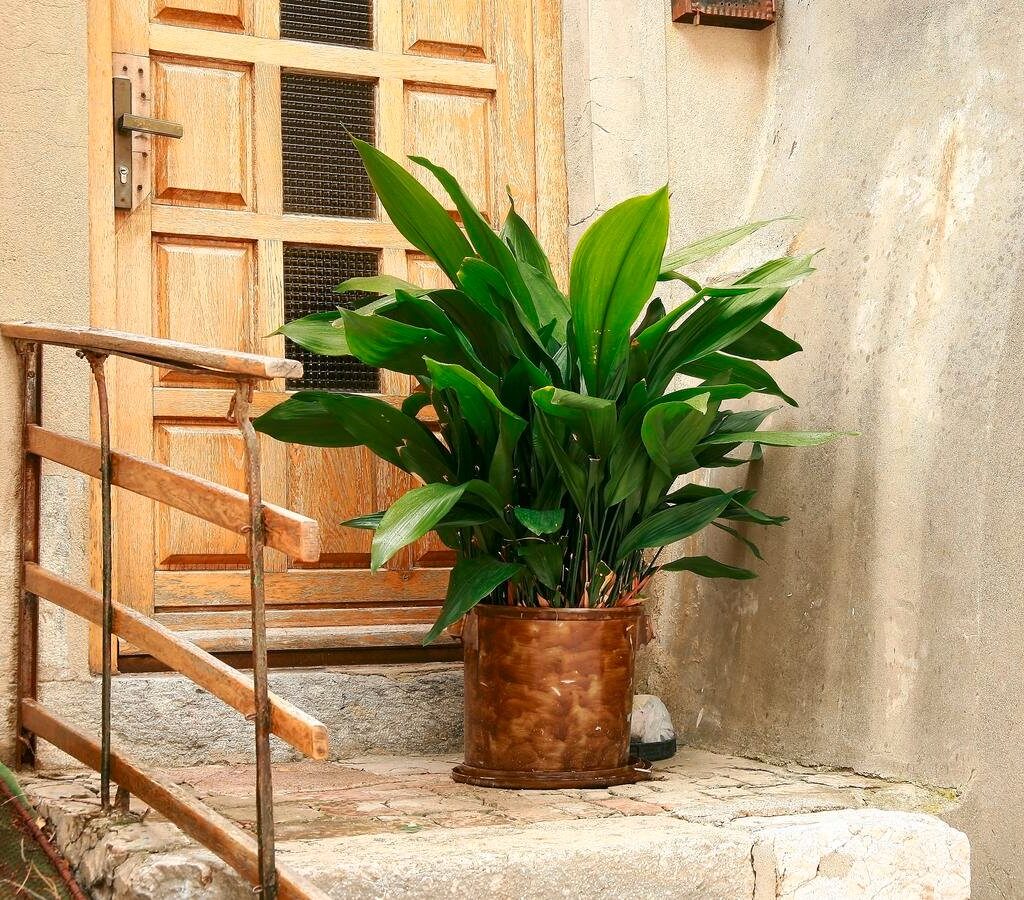
Important: Never water on a strict schedule without checking soil moisture first. Use these methods:
1. Finger Test
Insert your finger 1–2 inches into the soil:
- If it feels dry, it’s time to water.
- If it still feels moist, wait a few more days.
2. Moisture Meter
For precise measurement, use a moisture meter to gauge soil moisture at the root zone.
3. Visual Inspection
- Dry soil appears lighter and may pull away from the pot’s sides.
- Moist soil remains darker in color.
Signs of Overwatering and Underwatering
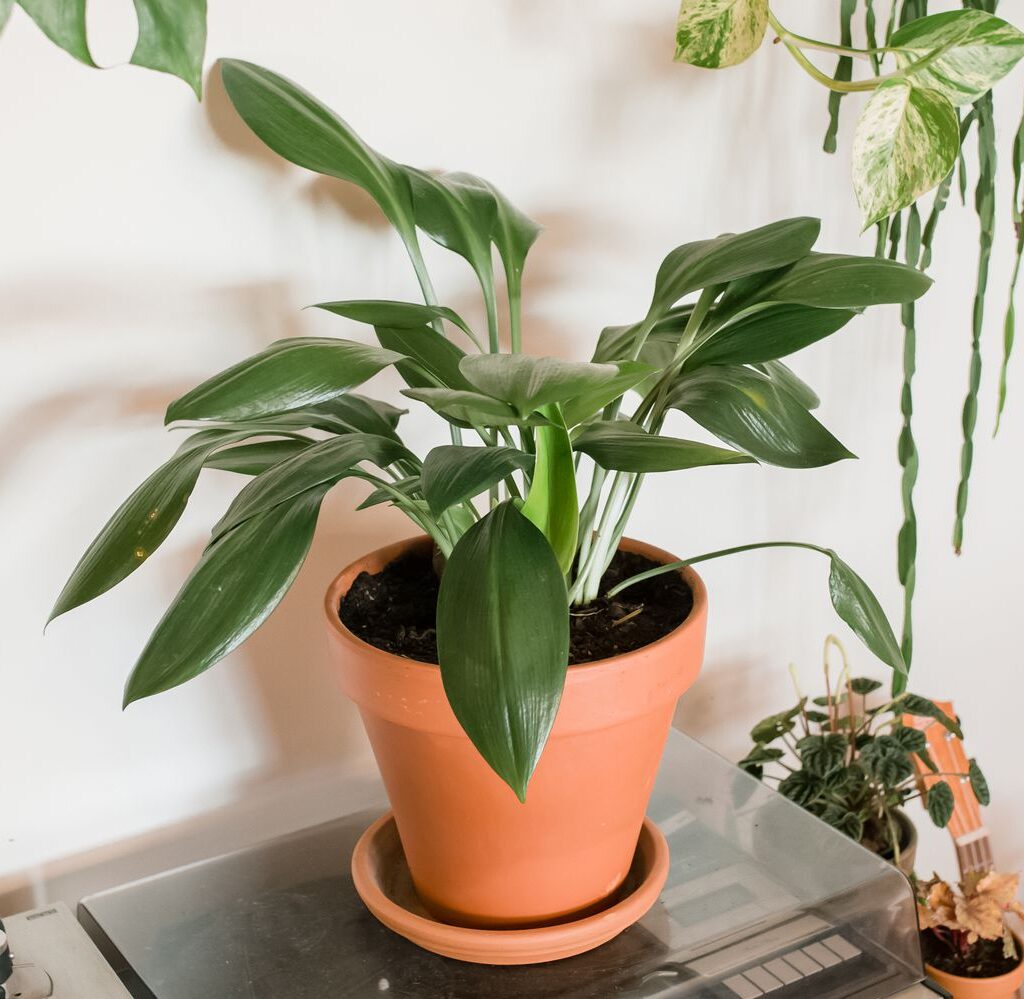
Recognizing early signs of watering mistakes helps prevent plant stress.
1. Signs of Overwatering
- Yellowing leaves, especially lower leaves
- Soft, mushy stems
- Blackened or decayed roots
- Musty, sour-smelling soil
Solution:
Remove affected leaves, allow the soil to dry thoroughly, and adjust watering frequency. Repot if necessary to improve drainage.
2. Signs of Underwatering
- Dry, crispy leaf edges or tips
- Leaf drooping or curling
- Soil pulling away from the pot’s edges
- Slowed or stunted growth
Solution:
Water thoroughly, ensuring excess drains away, and adjust your watering schedule.
Best Watering Techniques for Cast Iron Plants
1. Water Deeply and Evenly
When watering, soak the soil until water runs out of the drainage holes. This encourages deep root growth.
2. Use Room-Temperature, Non-Chlorinated Water
Cold water can shock roots, while chlorinated water may harm the plant. Use:
- Filtered water
- Rainwater
- Tap water left to stand overnight
3. Morning Watering
Water early in the day to allow excess moisture to evaporate, reducing the risk of fungal problems.
Seasonal Watering Guidelines
| Season | Watering Frequency | Additional Tips |
|---|---|---|
| Spring/Summer | Every 7–14 days | Check soil frequently; increase humidity if necessary |
| Autumn/Winter | Every 14–21 days | Water sparingly; avoid waterlogged soil and allow the topsoil to dry |
Common Watering Mistakes to Avoid
- Overwatering in low light or cool months
- Using dense, poorly-draining soil
- Allowing the soil to remain constantly wet
- Ignoring signs of environmental changes
- Watering on a strict schedule without checking soil moisture
Extra Care Tips for a Healthy Cast Iron Plant
- Clean leaves regularly with a damp cloth to remove dust and improve photosynthesis.
- Fertilize lightly every 6–8 weeks in spring and summer using a balanced, water-soluble fertilizer.
- Repot every 2–3 years to refresh soil and check root health.
- Avoid placing the plant in direct sunlight, which can scorch the leaves.
- Trim yellow or dead leaves at the base to maintain a tidy appearance.
Conclusion
The Cast Iron Plant is a reliable, low-maintenance houseplant admired for its durability and striking foliage. One of its most appealing qualities is its tolerance for inconsistent care, especially regarding watering.
As a general rule, water your Cast Iron Plant every 7–14 days during active growth and every 14–21 days during dormancy, adjusting based on temperature, light exposure, humidity, and soil conditions. Always allow the top 1–2 inches of soil to dry out between waterings and ensure good drainage to avoid overwatering.
By following these practical guidelines and observing your plant’s signals, you can enjoy a lush, vibrant Cast Iron Plant that adds elegance and greenery to your space for many years.
